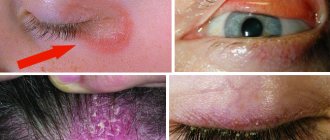What herbs help with urethritis?
In recent years, there has been a renewed interest in herbal medicine.
But it is considered not as an independent method of treating urethritis, but as an auxiliary measure. The medicinal properties of plants have been known for a long time, so they are used in the fight against various urological diseases.10 Within the framework of modern research, the effect of herbal remedies is presented in a completely different light. First of all, from the point of view of the ability to destroy microbial biofilm and overcome the resistance of uropathogens. The most widely used plants and herbs for urethritis are:
- chamomile;
- Rowan;
- angelica root;
- nettle;
- elecampane;
- cowberry;
- wheatgrass;
- strawberry, birch leaves;
- St. John's wort;
- goldenrod;
- corn silk;
- cornflower flowers;
- horsetail;
- marshmallow
Herbal remedies can be used as herbal decoctions, infusions, etc. Their components are also included in finished medicines.10
Treatment of acute urethritis
Acute urethritis can be treated well and quickly if the causative agent is identified, the drugs to which it is sensitive are determined, and the most effective treatment regimen is prescribed that can destroy the cause of the disease, remove inflammation, and not leave the preconditions for the development of chronic urethritis.
Usually, to treat this type of urethritis, an antibiotic is sufficient if it is caused by bacteria, an antimycotic if it is fungal, and an antiprotozoal drug if it is caused by protozoa. Herpetic urethritis is treated with antiviral drugs.
The choice of drug dosage, route of administration, and course duration depends on a number of factors, but usually does not exceed 10–14 days.
For STDs, the instructions define the drugs of choice and the duration of treatment. When treating nonspecific acute urethritis, the doctor focuses mainly on the effect of it and the results of intermediate analyzes of a smear from the urethra.
When treating acute urethritis, the choice is usually injectable drugs, which have better bioavailability and immediately create maximum concentrations of the antibiotic in the affected tissue. But such treatment is only possible in a clinic under the supervision of a doctor. For home regimens, alternative drugs are prescribed in tablets, which do not always have the required effectiveness. Although in some cases it is necessary to combine injections with tablets.
Depending on the pathogen identified, cephalosporins, fluoroquinolones, macrolides, tetracyclines, aminoglycosides, imidazoles and antifungal drugs may be prescribed.
How to treat acute urethritis if it is caused by both sexually transmitted and non-venereal bacteria in combination with protozoa or fungi?
This is actually not a rare situation when several pathogens of urethritis are detected at once. In this case, the selection of drugs is not easy. But for an experienced doctor this is not an insurmountable obstacle.
First of all, we determine the presence of protozoa, which, being large cells, can contain bacteria of other microorganisms. First we start therapy against them. Metrogyl is mainly used intravenously in combination with tablet forms, if necessary. The dosage is selected by the doctor.
Next, we add an antibiotic that acts on a sexually transmitted infection, if one is detected. Ideally, the drug is also prescribed taking into account the existing sensitivity of the identified nonspecific flora.
Such treatment has established itself as the most effective option for getting rid of acute mixed urethritis and helps to avoid its chronic form.
Can treatment with folk remedies for urethritis be dangerous?
It is important to understand that the basis of treatment for urinary tract infections is antibiotic therapy prescribed by a specialist. Herbal preparations, herbal decoctions, medicinal baths cannot be considered as an independent remedy for urethritis. They can only be effective in combination with an antibiotic. In addition, the uncontrolled use of traditional methods can be fraught with many dangers10:
- Allergic reaction. Many herbs are allergens. Therefore, their use may cause negative reactions.
- Difficulty in dosing. Dosing herbal teas and infusions can be difficult. At the same time, some plant components in large dosages have a toxic effect on the body.
That is why, from the point of view of patient safety, preference is given to ready-made herbal preparations. They have a carefully selected composition, precise dosage, and recommendations for use.10
Healing properties of parsley
It is considered a storehouse of useful substances and other positive components. In folk medicine, it is often combined with other medicines that can increase their miraculous power. It contains:
- vitamins;
- keratins;
- minerals;
- essential oils;
- salt;
- organic acids;
- inulin.
Thanks to this composition, even the most serious stages of the inflammatory process can be eliminated. It is better to start treatment at the initial stage, but if this is not possible, then still do not despair. Parsley for urethritis is quite a powerful remedy that will be able to resist the disease. This is due to the effect it has on the patient’s body. It consists in:
- antiseptic;
- anti-inflammatory;
- antibacterial;
- diuretic;
- normalizing blood circulation;
- analgesic effect.
It is advisable not to start carrying out such manipulations yourself, as this can only cause harm.
Fitolysin® paste – a natural preparation for the treatment of urinary tract infections
Phytolysin® paste for the preparation of an oral suspension (hereinafter referred to as Phytolysin®) is produced in Europe in accordance with international GMP 3 standards. It is intended for the preparation of an oral suspension. In this form, the components of the drug are absorbed better than when taking tablets 2. The convenient release form greatly simplifies the dosage and use of the drug.
The composition of Fitolysin® paste includes a condensed extract of a mixture of plant raw materials (9 components) and 4 natural essential oils. The drug has anti-inflammatory, diuretic, antispasmodic effects. It helps relieve pain and eliminate inflammation in urinary tract infections.6
According to the instructions, Fitolysin® paste should be taken 3-4 times a day, dissolved in warm sweet water (1 tsp per 0.5 cup of liquid). The course of treatment lasts from 2 weeks to 1.5 months. If necessary, it can be extended.6
Tests for urethritis
- Microscopy of a smear from the urethra: we determine signs of inflammation, leukocytes, mucus, the amount of microflora. A number of STIs can be identified: gonorrhea, trichomonas, gardnerella, candida. In our clinic, the smear is done within 30 minutes. Costs 900 rubles.
- PCR diagnosis of sexually transmitted diseases. A scraping is also taken from the canal, in which the laboratory identifies the DNA of pathogens of sexually transmitted diseases. This analysis takes 1 day. Costs 300 rubles. for 1 infection or 1700 rubles. for a complex of major STIs.
- Culture of urethral flora with determination of its sensitivity to antibiotics and, in some cases, to bacteriophages. The analysis is completed within 5–7 days. Costs from 1600 rubles, depending on its volume.
- A general urine test helps to identify the inflammatory process, salts, sand, which could cause injury and inflammation of the urethra.
- To diagnose allergic urethritis, a clinical blood test and a total immunoglobulin E test are performed.
Taking into account the clinical picture, the doctor may add studies of the prostate gland, blood, and urethroscopy.
Based on the examination, a diagnosis of acute or chronic urethritis, specific or nonspecific, of one nature or another is established. Therapy is prescribed depending on this and can be started on the first day of the patient’s visit or after all tests are ready.
Causes and symptoms
The indirect cause of the disease is lifestyle and reduced defense mechanisms of the body, weak immunity, and lack of vitamins. The nature of urethritis can be either non-infectious or infectious.
The first type occurs as a result of mechanical trauma to the canal, sometimes as a result of medical procedures, such as the installation of a catheter. Pathological damage to the mucous membrane may be the result of a local allergic reaction. An allergen that enters the body with food is excreted in the urine, irritating the epithelium of the canal.
Damage to the delicate mucous membrane is possible with urolithiasis. Stones formed in the bladder come out and catch epithelial cells along the way. Injury to the mucous membrane is possible at the beginning of sexual activity during the first contacts. The peculiarities of the blood supply system of the pelvic organs determine the development of congestion in this area. A sedentary lifestyle contributes to this. An insufficient amount of oxygen reaches the tissues, local immunity decreases, and foci of inflammation and pathological changes in cells appear.
Factors contributing to the occurrence of nonspecific urethritis and other pathologies of the urinary system:
- sedentary lifestyle;
- alcohol consumption;
- promiscuous sex life;
- weak immunity;
- hypothermia;
- hormonal imbalances;
- chronic inflammatory diseases of the reproductive and urinary systems;
- frequent stressful situations.
Expectant mothers and women during menopause are at risk: the body's protective functions are below normal, and exacerbations of diseases occur. Added to this are serious hormonal changes. Complicated childbirth can also cause urethritis in a woman.
Infectious urethritis, as the name implies, is caused by various infectious agents. There are several routes of infection. The most common is sexual intercourse with unprotected contact. Along with it, it is also possible for representatives of pathogenic microflora to enter the home through a towel or bed linen. Parents who observe signs of an inflammatory process should be especially attentive. Co-sleeping with a child, which is common these days, can cause household infection of the baby through bedding.
The anatomical structure of the external genital organs in the female body and the proximity of the anus contribute to the entry of pathogens from the vagina and rectum into the urethra. The chances of this phenomenon are especially high in cases where a woman prefers to wear thongs. A narrow strip of tissue becomes a bridge for bacteria that can freely move from the anus. Another reason may be improper hygiene procedures.
Foci of general inflammation, such as caries, sore throat, tracheitis, are sources of infection of other organs and tissues in the body, where local immunity is not capable of adequate protection. Infectious agents spread through blood and lymph; respectively, these methods of spread are called hematogenous and lymphogenous.
A known cause of urethritis in both men and women is descending infection. Often this is cystitis or pyelonephritis.
Depending on the pathogen, infectious urethritis can be specific or nonspecific. In the latter case, the pathogens are E. coli, staphylococcus, streptococcus. The first type of disease includes numerous sexually transmitted infections:
- chlamydia;
- Trichomonas;
- candidiasis;
- gonorrhea;
- microplasma
A distinctive characteristic of bacterial urethritis is the period of incubation, or asymptomatic development of pathogenic organisms. Its duration is determined by the type of infection, ranging from a couple of days to a month. If pathogens of sexually transmitted infections enter the urethra, the acute phase of the disease can pass in a short time. Symptoms disappear, the disease becomes chronic. It can be asymptomatic or with minimal manifestations, for example, scanty purulent discharge or the appearance of crusts on the outside of the urethra after a night's sleep. A person becomes a source of infection for his partner without knowing it. Hidden infections cause dangerous complications, including infertility. They are also dangerous for a woman who is preparing for pregnancy, as they can cause disturbances in the development of the fetus.
Important! Even with minor signs of urethritis, it is necessary to seek medical help and undergo the prescribed course of treatment.
Common signs of urethritis are:
- general intoxication with fever and poor health;
- purulent discharge of a white, green color with an odor;
- burning sensation at the beginning and end of urination;
- pain in the lower abdomen;
- the urge to urinate occurs more often, many of them are false;
- swelling of the urethral mucosa;
- uncharacteristic painful redness;
- elements of red blood cells or blood, purulent formations in the urine;
- irritation of the intimate area, accompanied by itching and pain.
High values on the thermometer and other manifestations of intoxication are manifestations of acute urethritis. It can be not only a stage of primary infection, but also a period of exacerbation of a chronic disease. It is important for the patient not to delay a visit to a specialist. Diagnosis and treatment of urethritis in the early stages can stop exacerbations, achieve long-term remission, or completely get rid of the disease.
The exclusive symptoms of urethritis in men are pathological changes in the process of urination. These include:
- delay in the onset of urine output;
- decrease in jet intensity;
- process interruption;
- leakage of urine drop by drop;
- absolute delay.
Important! A dangerous consequence of a permissive attitude towards the disease is complete urinary retention, which requires urgent hospitalization and installation of a catheter. At the first symptoms in men, surgical treatment of urethritis is necessary.
The reason is that the mucous membrane affected by inflammation swells to such an extent that it blocks the narrow cavity of the urination channel. With urethritis in women, even intense swelling does not interfere with the process of urine excretion, since the urethra is quite wide, short and straight.
A feature of the symptoms of urethritis in women is the difficulty in accurately defining them. The proximity of the urethra and the vaginal opening makes it difficult to determine the source of heavy discharge, itching and pain.
The first manifestations of the disease in most cases subside on their own. The disease gradually turns into a chronic asymptomatic form. Scanty sparse discharge, slight discomfort in the intimate area, the appearance of purulent crusts at the exit of the urethra are evidence of pathology that may disappear completely. In this case, the affected area will spread, the ascending infection affects the prostate gland, bladder, ureters and kidneys. Gradually, the pathology also affects the internal genital organs.
Important! Recent studies have shown a connection between chronic urethritis in men and testicular cancer.








